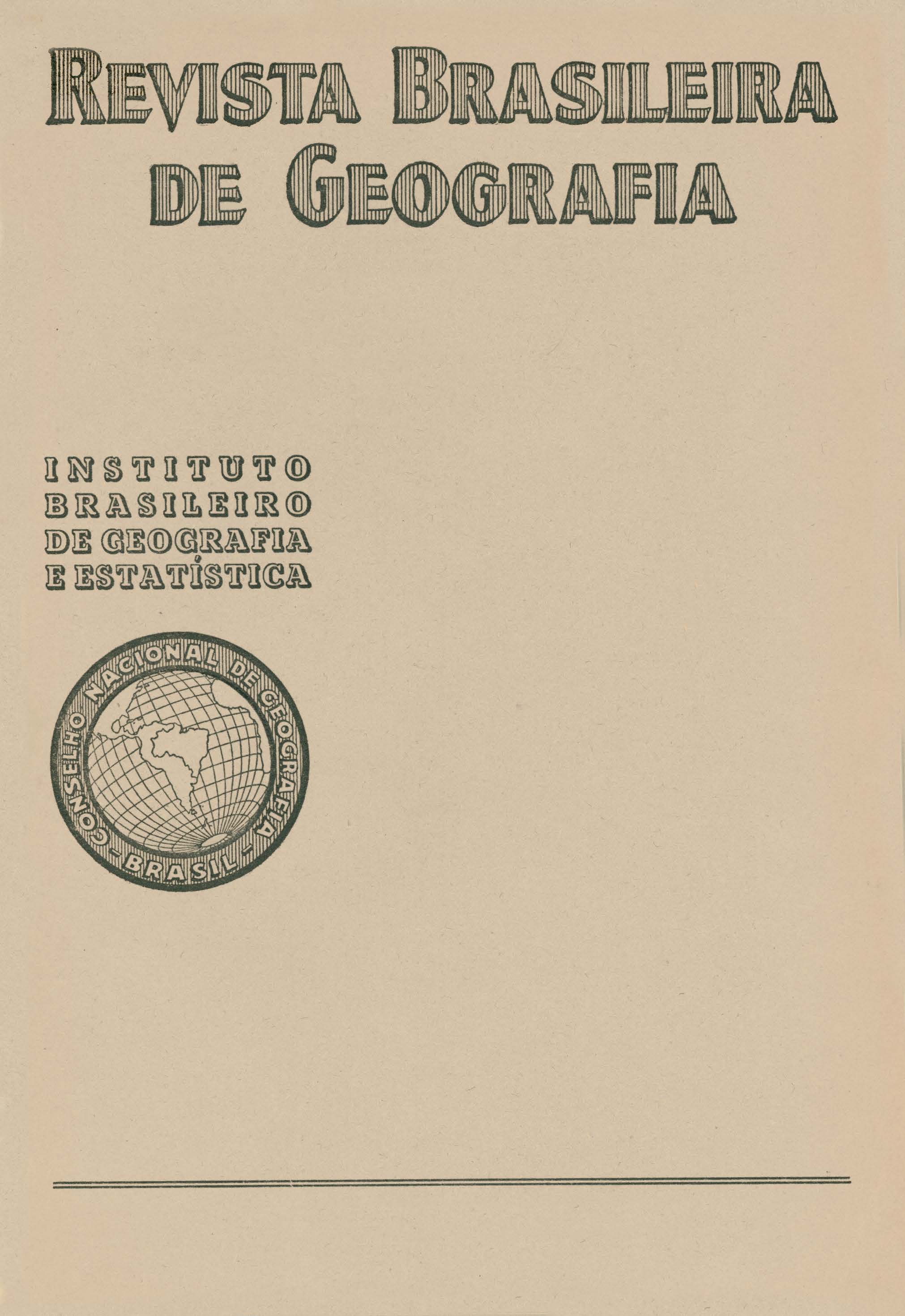Introdução ao conhecimento da área maranhense abrangida pelo plano de valorização econômica da Amazônia
Palavras-chave:
Maranhão, Amazônia, Geografia Regional, Geografia Física, Geografia Econômica, Geografia da PopulaçãoResumo
The author declares in the introduction to his paper that it does not represent more than a first attempt in the sense of obtaining a complete study of the area of the State of Maranhão included in the economic valorization plan for the Amazonic region, as it was not based on field observations. Bearing this in mind, almost every existing book on the subject was consulted.
The present paper is divided into two parts - Physical and Human aspects, each subdivided in chapters as follows: geology, morphology and soils, hidrography, climate and vegetation, in the first part, and, in the second, occupation of the land (peopling), distribution of the population, principal population centers, general aspects of the economy, types of activity and commerce and, finally, transport and communications.
In the first part the author describes, initially, the principal characteristics of the relief of the region; it is an area where altitudes increase gradually from the coast towards the interior in such a manner that the relief assumes the aspect of three large "steps" with altitudes ranging from 100 to 300 meters in the first; in the second "step" these quotas vary between 300 and 400 meters and, finally attain 700 meters in the last, where the higher “serras" (tablelands) occur.
Geologically, the area is mostly occupied by the vast sedimentary basin which extends from 3 to 10° of latitude and from 41 to 49° of longitude; its boundaries and stratigraphic column are presented in the text.
In what concerns to soils, few informations could be gathered due to the lack of previous studies; the author presents, nevertheless, a relation of the principal soil types which occur within the area.
Studying the hidrography, the author describes the drainage system emphasizing its basic characteristic: a typical river course presents three sections - a higher valley, a medium course within which rapids occur and a lower course marked by meanders; the estuary is almost always well developed and similar to european "rias" (drowned river mouths).
Two climatic types occur in the so called "amazonic" part of Maranhão: covering the northwestern part of the State, the Am type (Koppen), hot and humid monsoonic climate and covering the rest of the area, the Aw type (Koppen), tropical humid climate.
The author divides the vegetal covering of the region into three large groups: the forest formations, which present many of the characteristics of the amazonic Hyloea in the northwest of the State, the grasslands (grasslands, savannas, "cerrados", "caatingas", etc.) and mangrove, an hydrophylous formation which accompanies the coast.
From a phytophysiognomic stand-point the region can be defined as a transition between the humid tropical forest and the xerophylitic formations of the Brazilian Northeast; the author tries to define, as accurately as possible, the limits of each of the individual formations.
The occupation of Maranhão started from the coast towards the hinterland; the southeast of the State received groups of settlers related to the cattle cycle of brazilian historic economy. The author states that the primitive characteristics of the peopling are still reflected in the distribution of the population; the plain adjacent to the coast and the agricultural zone are the ones which present higher concentrations. The distribution of the population is closely related to the drainage system since rivers represent the easiest means of communication.
The author analyses, then, the principal population nuclei in the area, describing the site and the phases of expansion of the two important cities: São Luís, the Capital, and Caxias.
In what concerns to economy, the area is divided into five zones as follows: the Coastal Plain, where extensive cattle-raising predominates over subsistence agriculture (shifting cultivation), Eastern Maranhão, where extensive cattle-raising predominates, the Forested Zone, where the gathering of forest products and subsistence agriculture are the chief activities, the Lower "Sertão" (hinterland), where the important economic activities are gathering forest products, agriculture and cattle-raising and, finally, the Upper "Sertão" where extensive cattle-raising and extractivity dominate. Each of these zones is studied in detail and the author preliminary concludes that the bases of the economy of the area are agriculture and the gathering of forest products (chiefly "babaçu").
In the chapter on transports and communications, the bad condition of the railroad which serves the area is enhanced, as well as the fact represented by the difficulty of connections between the interior and the coast: roads do not present a better condition, only a few permitting year-round operation. Aerial and fluvial communications represent an important role in the State, the former predominating over the others.






